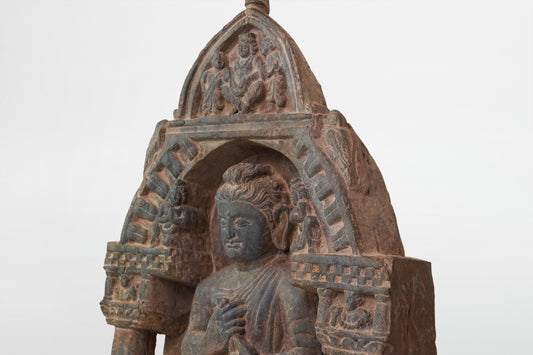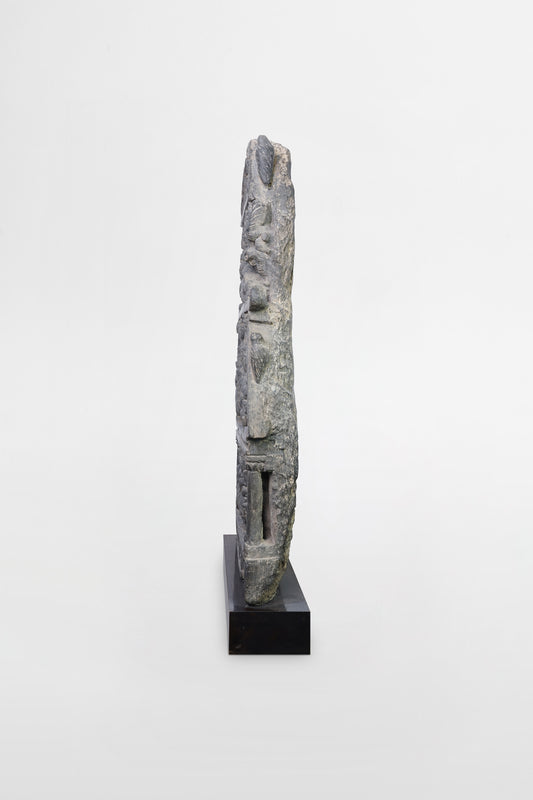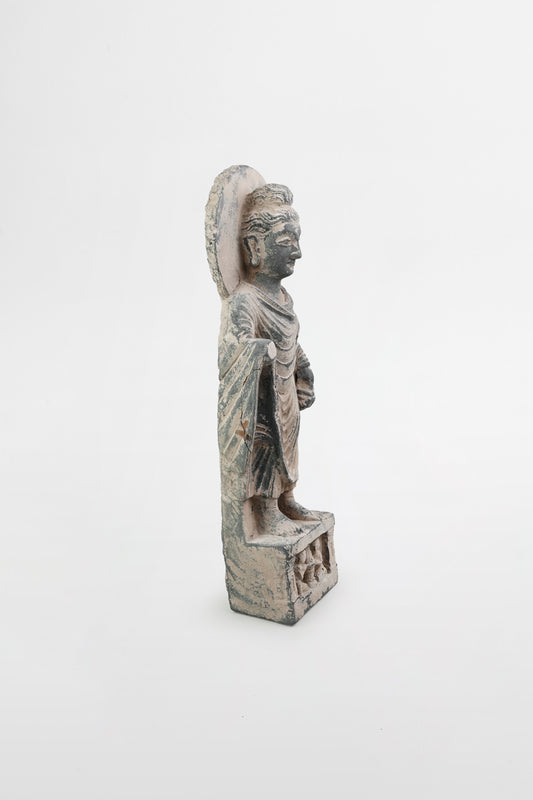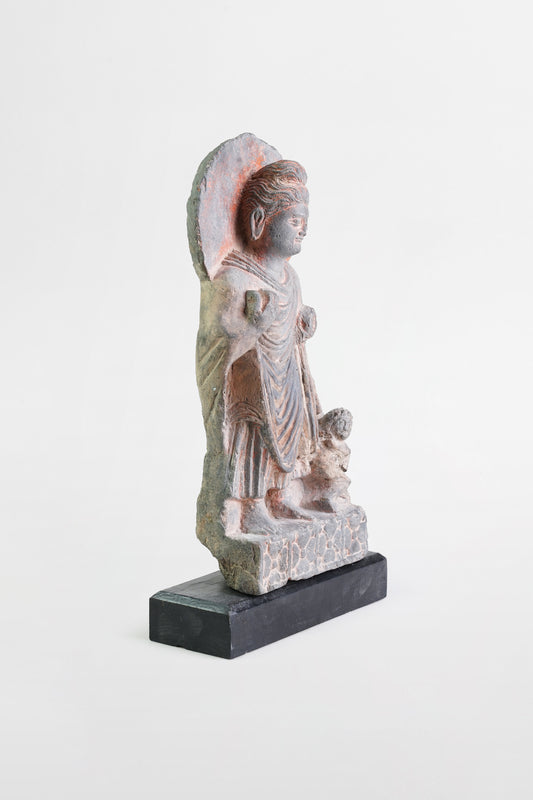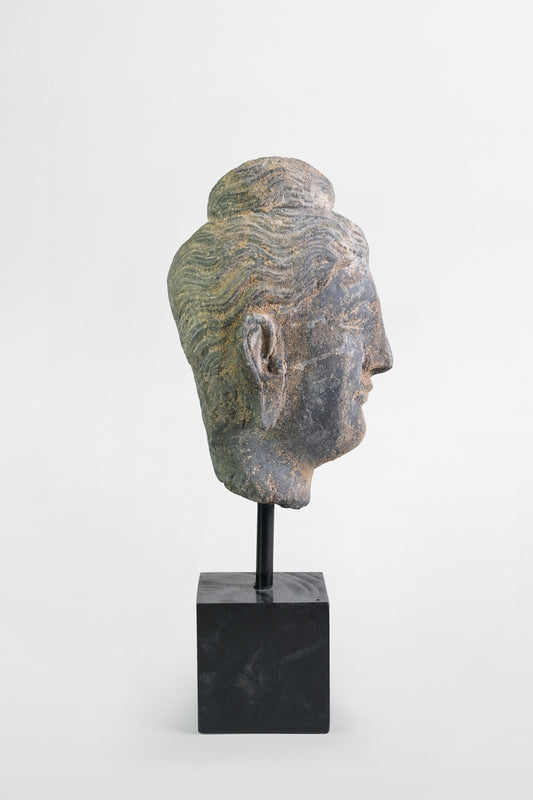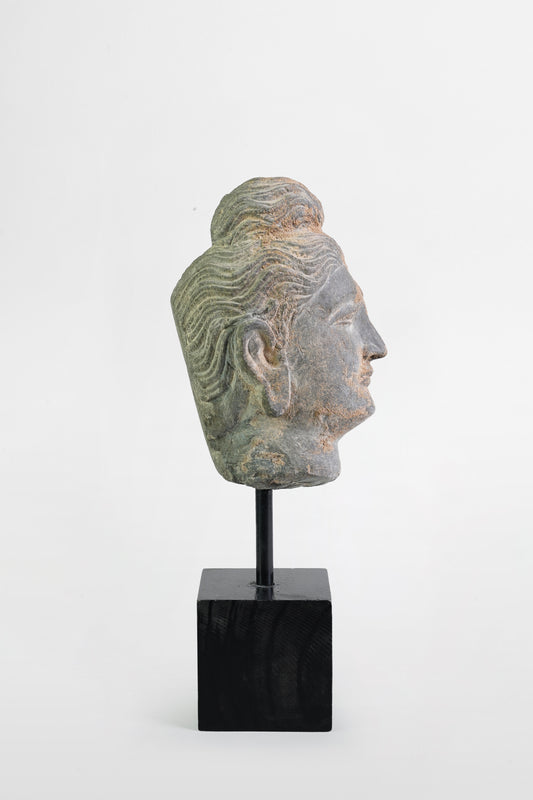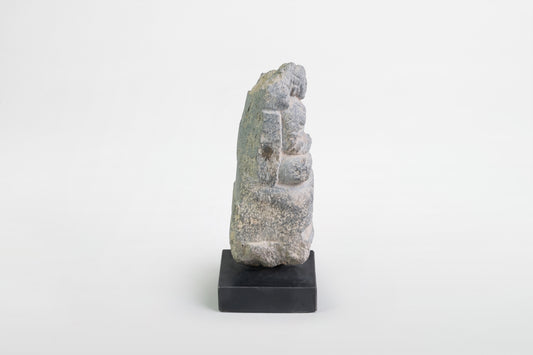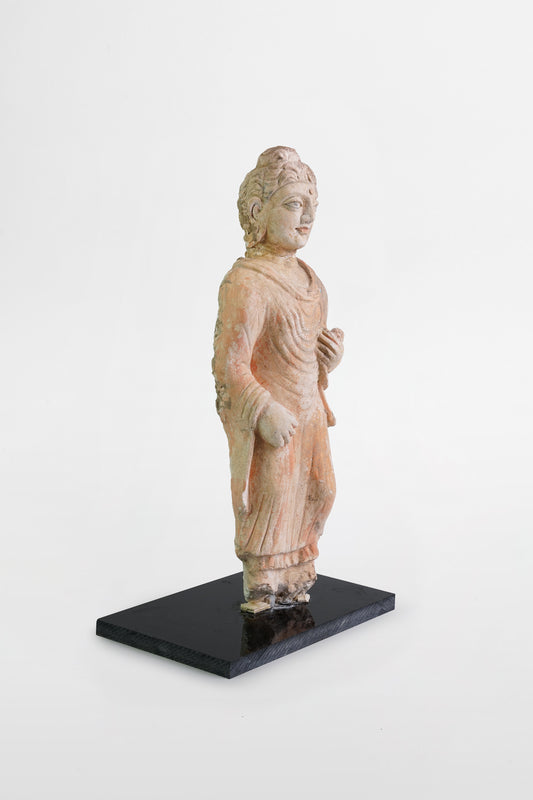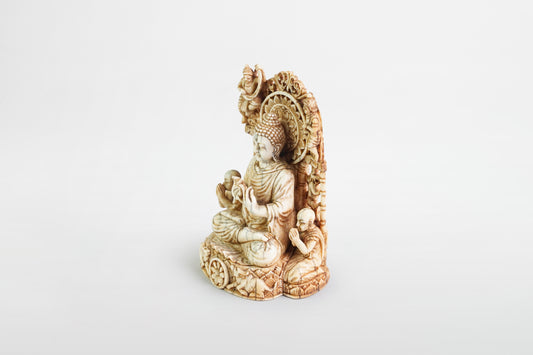Collection: Indian Art
Antiquities from the Indian Subcontinent
This collection offers a window into the spiritual and artistic traditions of the Indian subcontinent, spanning from the Bronze Age to the early modern period. Centered on Buddhist sculpture from Gandhara, ritual terracottas from the Indus Valley, and princely miniature painting from the Deccan, each object reflects the region’s enduring engagement with the sacred, the mythic, and the monumental.
Among the highlights are several narrative friezes and steles from the Kushan-era Gandhara region (2nd–3rd century CE), where Buddhist visual culture flourished under Indo-Scythian and Central Asian patronage in a distinctive fusion of Buddhist and classical forms. These reliefs depict episodes from the Buddha’s life, processions, and donor figures.
You will also find various depictions of the Buddha, sculptures of Bodhisattvas, as well as deities such as Hariti and Panchika, and classical figures like Atlas and Herakles—visual echoes of Hellenistic influence that shaped Gandharan aesthetic ideals in posture, musculature, and architectural framing.
The collection also includes terracotta figurines from the Indus Valley civilization (circa 2000 BCE), embodying fertility motifs and early symbolic forms. Though abstract and minimal, these pieces offer insight into proto-iconographic practices in ancient South Asia.
From a later chapter in Indian art history, Deccan miniature paintings (18th century) enrich the collection with scenes of courtly life and devotional imagery. Characterized by fine detailing, lyrical color palettes, and elegant stylization, these works represent the legacy of manuscript painting traditions under regional Muslim and Hindu patronage.
Spanning over three thousand years, this selection of Indian antiquities reveals a culture where divine presence, ritual purpose, and artistic excellence were deeply entwined—each object a bearer of meaning, memory, and transcendence.
Read less-
Gandharan Bust of Hariti and Panchica – India, 2nd–4th century
Regular price €8.800,00Regular priceUnit price / per -
Gandharan schist frieze – India, 2nd–3rd century
Regular price €7.000,00Regular priceUnit price / per -
Gandharan schist frieze showing a scene from the life of Buddha – India, 2nd–3rd century
Regular price €4.900,00Regular priceUnit price / per -
Gandharan schist frieze showing a scene from the life of Buddha – India, 2nd–3rd century
Regular price €4.600,00Regular priceUnit price / per -
Gandharan schist frieze showing a scene from the life of Buddha – India, 2nd–3rd century
Regular price €2.500,00Regular priceUnit price / per -
Gandharan schist frieze showing a scene from the life of Buddha – India, 2nd–3rd century
Regular price €2.500,00Regular priceUnit price / per -
Gandharan figure of Panchika sitting on throne, flanked by two lions – India, 2nd–3rd century
Regular price €9.800,00Regular priceUnit price / per -
Gandhara Buddha figure – India, 2nd century
Regular price €9.800,00Regular priceUnit price / per -
Gandharan Buddha figure – India, 2nd–3rd century
Regular price €6.400,00Regular priceUnit price / per -
Gandharan Bodhisattva figure – India, 2nd–3rd century
Regular price €3.700,00Regular priceUnit price / per -
Gandharan Buddha head – India, 2nd–3rd century
Regular price €4.000,00Regular priceUnit price / per -
Gandharan Buddha head – India, 2nd–3rd century
Regular price €2.500,00Regular priceUnit price / per -
Gandharan Atlas figure – India, 3rd–4th century
Regular price €1.900,00Regular priceUnit price / per -
Gandharan Buddha figurine – India, 2nd–3rd century
Regular price €700,00Regular priceUnit price / per -
Stone figurine of a sacred animal – India, 6th century
Regular price €700,00Regular priceUnit price / per -
Gandharan Buddha fresco – India, 3rd–4th century
Regular price €1.900,00Regular priceUnit price / per -
Gandharan fresco of Greek God – India, 3rd–4th century
Regular price €1.400,00Regular priceUnit price / per -
Gandharan fresco fragment of Herakles – India, 3rd–4th century
Regular price €1.600,00Regular priceUnit price / per -
Figure of sitting Shahi – India, 5th–8th century
Regular price €1.900,00Regular priceUnit price / per -
Ivory Buddha sitting on throne – India, 19th century
Regular price €2.800,00Regular priceUnit price / per -
Pottery bowl, Indus Valley – India, 2nd millennium BC
Regular price €2.500,00Regular priceUnit price / per -
Pottery bowl, Indus Valley – India, 2nd millennium BC
Regular price €1.200,00Regular priceUnit price / per -
Pottery bowl, Indus Valley – India, 2nd millennium BC
Regular price €1.200,00Regular priceUnit price / per -
Pottery vessel, Indus Valley – India, 2nd millennium BC
Regular price €1.200,00Regular priceUnit price / per -
Pottery vessel, Indus Valley – India, 2nd millennium BC
Regular price €2.500,00Regular priceUnit price / per -
Ceramic figurine of a fertility goddess from Indus Valley – India, 2nd millennium BC
Regular price €1.200,00Regular priceUnit price / per -
Ceramic figurine of a fertility goddess from Indus Valley – India, 2nd millennium BC
Regular price €1.600,00Regular priceUnit price / per -
Ceramic figurine of a fertility goddess from Indus Valley – India, 2nd millennium BC
Regular price €1.900,00Regular priceUnit price / per -
Deccan painting – India, 18th century
Regular price €2.500,00Regular priceUnit price / per -
Deccan painting – India, 18th century
Regular price €2.500,00Regular priceUnit price / per -
Indian painting – India, 18th century
Regular price €2.500,00Regular priceUnit price / per -
Astrological instrument from the Mughal dynasty, possibly Lahore – West India, 18th century
Regular price €5.500,00Regular priceUnit price / per


